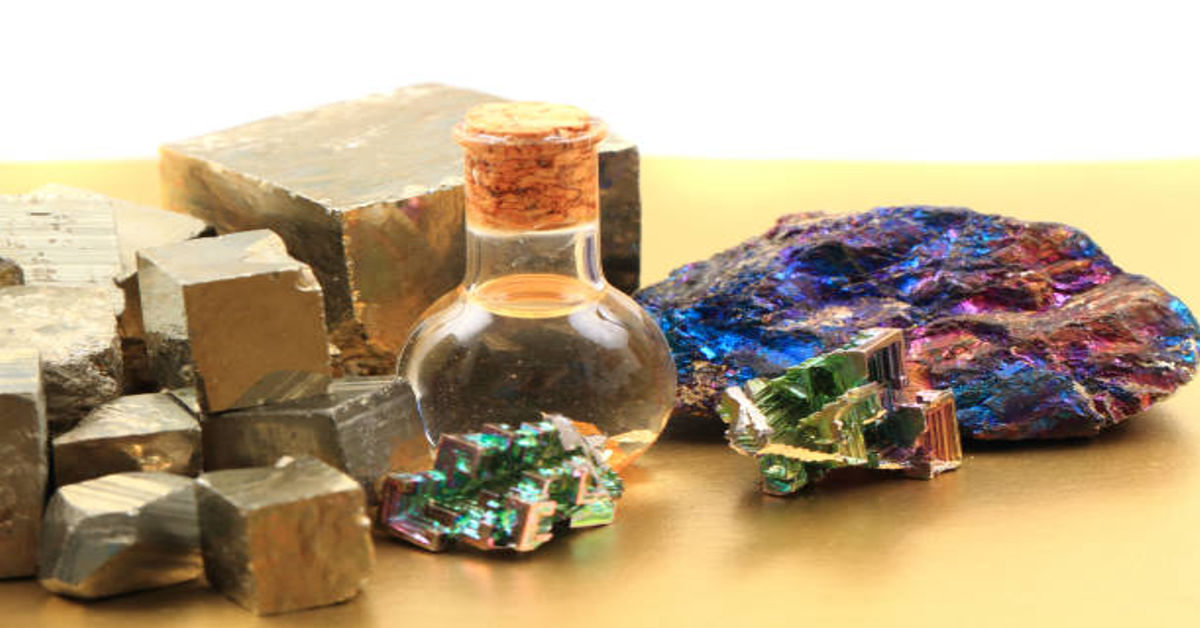Mineral Spirits: Composition, Properties, Uses, and Safety
In the world of painting, woodworking, automotive maintenance, and industrial cleaning, mineral spirits hold a place of great importance. Often called white spirits, they are among the most versatile solvents available today. Despite their simple appearance as a clear liquid, mineral spirits have an intricate chemical makeup and a vast range of uses, from dissolving oil-based paints to degreasing metal surfaces. Understanding what mineral spirits are, how they function, their chemical nature, safety concerns, and alternatives helps both professionals and DIY enthusiasts handle them wisely and safely.
1. Introduction to Mineral Spirits
Mineral spirits are petroleum-derived solvents primarily used for thinning oil-based paints and cleaning tools or surfaces. They are clear, colorless liquids that have a mild odor and are less toxic than some other solvents such as turpentine or acetone. Chemically, mineral spirits are composed mainly of aliphatic, alicyclic, and aromatic hydrocarbons, which come from refined crude oil.
These solvents are favored because they effectively dissolve oils, waxes, and resins while leaving behind minimal residue. They evaporate slowly compared to faster solvents like acetone, making them suitable for delicate applications that require controlled drying times. Their relatively mild nature also makes them less flammable and less odorous than older organic solvents used in the past.
In various industries — painting, manufacturing, automotive repair, and furniture finishing — mineral spirits are indispensable for cleaning, thinning, and degreasing. Yet, despite their utility, they must be handled with knowledge and respect due to their chemical volatility and environmental implications.
2. Chemical Composition of Mineral Spirits
Mineral spirits consist primarily of hydrocarbon compounds derived from petroleum distillation. These hydrocarbons typically contain carbon chain lengths ranging from C7 to C12, which contributes to their liquid nature at room temperature.
| Component Type | Description | Typical Percentage Composition |
|---|---|---|
| Aliphatic Hydrocarbons | Straight or branched chain compounds; low odor, nonpolar | 50–80% |
| Alicyclic Hydrocarbons | Ring-like structures (e.g., cyclohexane); contribute to solvency | 10–30% |
| Aromatic Hydrocarbons | Benzene derivatives like toluene or xylene; improve dissolving power | 10–20% |
These proportions may vary depending on the grade or manufacturer. Aromatic content, for example, directly affects the solvency power — higher aromatic content increases dissolving strength but also raises toxicity and odor levels.
3. Grades and Types of Mineral Spirits
Mineral spirits are available in several grades, each tailored for specific applications and safety levels. The three main grades are:
| Grade Type | Aromatic Content | Characteristics and Use |
|---|---|---|
| Type I (High Aromatic) | Up to 25% | Strong solvency, used in industrial cleaning and paint removal. |
| Type II (Low Aromatic) | Below 5% | Milder odor, safer for domestic and painting applications. |
| Type III (De-aromatized) | <1% | Virtually odorless, low-toxicity, used in consumer products and indoor environments. |
De-aromatized or odorless mineral spirits are produced by further refining to remove most aromatic hydrocarbons, making them less hazardous for indoor use and more environmentally friendly.
4. Physical and Chemical Properties
The properties of mineral spirits determine how they behave during use — their evaporation rate, solvency, and compatibility with materials.
| Property | Typical Range/Description |
|---|---|
| Appearance | Clear, colorless liquid |
| Odor | Mild petroleum-like or almost odorless (refined grades) |
| Boiling Range | 150°C – 200°C (302°F – 392°F) |
| Flash Point | 38°C – 50°C (100°F – 122°F) |
| Density | 0.76 – 0.80 g/cm³ |
| Evaporation Rate | Moderate |
| Solubility in Water | Practically insoluble |
| Solubility in Organic Solvents | Miscible |
| Vapor Pressure | 2–10 mmHg at 20°C |
| pH | Neutral (non-aqueous) |
These characteristics make mineral spirits safer and easier to handle than stronger solvents like lacquer thinner or toluene, yet powerful enough for most cleaning and degreasing tasks.
5. Difference Between Mineral Spirits and Turpentine
Many people confuse mineral spirits with turpentine because both are used to thin paints and clean brushes. However, their origins and chemical properties are distinct.
| Aspect | Mineral Spirits | Turpentine |
|---|---|---|
| Source | Petroleum distillation | Natural resin from pine trees |
| Odor | Mild or nearly odorless | Strong, sharp pine-like smell |
| Toxicity | Lower, depending on grade | Higher; can cause skin irritation |
| Evaporation Rate | Slower | Faster |
| Cost | Economical | More expensive |
| Common Use | Thinning oil paints, cleaning tools | Fine art painting, varnish making |
In essence, mineral spirits are a synthetic petroleum-based alternative to turpentine, providing similar results with fewer odors and less irritation.
6. Major Uses of Mineral Spirits
Mineral spirits serve as a versatile tool across numerous fields. Below are some of their most prominent uses:
6.1. Paint Thinner
The most common use of mineral spirits is as a paint thinner for oil-based paints, varnishes, and enamels. It allows painters to achieve smoother finishes, better flow, and more manageable drying times. Unlike water, which cannot dissolve oil-based products, mineral spirits dissolve the resins and pigments efficiently.
6.2. Cleaning and Degreasing
Mineral spirits are widely used to clean paintbrushes, rollers, and spray guns after use. In mechanical and industrial settings, they act as a powerful degreaser for engines, machinery parts, and tools contaminated with oils or lubricants.
6.3. Surface Preparation
Before painting, woodworking, or varnishing, surfaces must be clean and free from grease or wax. Wiping with mineral spirits ensures complete removal of contaminants, leading to better adhesion and finish quality.
6.4. Automotive and Industrial Use
Automotive shops use mineral spirits to remove grease, tar, and adhesive residues from metal parts. Its non-corrosive nature makes it safe for most metals and plastics.
6.5. Wood Finishing and Restoration
In woodworking, mineral spirits help reveal the natural grain of wood, dissolve wax buildup, and thin oil-based finishes such as tung or linseed oil for smoother application.
6.6. Household Applications
In households, mineral spirits can be used (carefully) for removing sticky labels, tar stains, shoe polish, or scuff marks on floors and furniture. However, it should always be tested on a small area first.
7. Working Mechanism: How Mineral Spirits Dissolve Materials
The dissolving ability of mineral spirits is based on the “like dissolves like” principle in chemistry. Oil-based paints and greases are nonpolar substances, while mineral spirits are also nonpolar hydrocarbons. This similarity in molecular structure allows mineral spirits to penetrate and break down the bonds that hold oil-based compounds together.
When applied, the solvent molecules surround the oil or resin molecules and separate them into smaller particles that can be easily wiped away or evaporated, leaving surfaces clean and residue-free. This property explains why mineral spirits are particularly effective for oil-based materials but ineffective for water-based substances.
8. Safety Precautions and Handling
Despite being safer than many other solvents, mineral spirits still require careful handling because they are flammable and can cause health issues upon prolonged exposure.
8.1. Health Hazards
Mineral spirits can cause:
- Skin Irritation: Prolonged contact may lead to dryness or dermatitis.
- Respiratory Issues: Vapors can irritate lungs and mucous membranes.
- Central Nervous System Effects: High vapor concentration may cause dizziness or nausea.
- Eye Irritation: Direct contact can result in burning or watering eyes.
8.2. Safety Measures
| Safety Aspect | Precautionary Steps |
|---|---|
| Ventilation | Always work in well-ventilated areas to avoid vapor buildup. |
| Protective Gear | Use gloves, goggles, and masks. |
| Fire Safety | Keep away from flames or sparks; store in closed containers. |
| Spill Handling | Absorb with sand or vermiculite; avoid using water for cleanup. |
| Disposal | Take to hazardous waste facility; do not pour down drains. |
By following these precautions, the risks associated with mineral spirits can be minimized significantly.
9. Environmental Impact
Mineral spirits are volatile organic compounds (VOCs), which means they evaporate into the atmosphere and can contribute to smog formation when used extensively. Additionally, improper disposal — such as pouring into soil or water — can contaminate groundwater and harm aquatic life.
To mitigate these effects:
- Use low-odor or de-aromatized formulations with lower VOC content.
- Reuse or recycle used solvent by filtering impurities.
- Store properly to reduce unnecessary evaporation.
- Dispose of through certified hazardous waste collection points.
Eco-conscious behavior ensures responsible solvent usage while preserving environmental health.
10. Storage and Shelf Life
Proper storage extends the lifespan and safety of mineral spirits. They should be kept in tightly sealed containers, preferably metal or chemical-resistant plastic, and stored in a cool, dry, and well-ventilated area away from heat or direct sunlight.
- Shelf Life: Approximately 5–10 years, depending on exposure to air and contamination.
- Labeling: Always mark containers clearly to avoid accidental misuse.
- Recycling Tip: Used mineral spirits can be decanted and filtered to remove paint solids for reuse in cleaning applications.
11. Substitutes and Eco-Friendly Alternatives
Although mineral spirits are effective, environmental and health concerns have led to the development of safer alternatives.
| Alternative Solvent | Source | Advantages | Limitations |
|---|---|---|---|
| Citrus-Based Solvents | Derived from orange peels | Biodegradable, pleasant odor, non-toxic | More expensive, slower drying |
| Soy-Based Cleaners | Plant-derived | Renewable, low VOC | May leave oily residue |
| Water-Based Degreasers | Synthetic surfactants | Nonflammable, safe for indoor use | Less effective on heavy oils |
| Acetone or Alcohols | Synthetic | Fast-drying, available | Higher volatility, more aggressive |
Choosing an alternative depends on the task’s nature — for example, citrus-based cleaners are ideal for household use, while acetone works better for industrial degreasing.
12. Reusing and Recycling Mineral Spirits
Used mineral spirits often contain dissolved paint or grease but can be reclaimed through settling and filtration:
- Pour used solvent into a clean, sealable container.
- Allow it to sit undisturbed for several days.
- Solids will settle at the bottom.
- Carefully pour off the clear top layer into a new container.
- Dispose of residue properly.
This process saves money and reduces environmental waste, allowing the same solvent to be reused for cleaning rather than discarded prematurely.
13. Industrial and Commercial Applications
Beyond household and artistic uses, mineral spirits play vital roles in industries:
- Manufacturing: Cleaning of mechanical parts and molds.
- Automotive: Degreasing engines and cleaning surfaces before painting.
- Printing Industry: Solvent for inks and rollers.
- Adhesives Production: Acts as a carrier for certain glues and sealants.
- Lubricant Manufacturing: Used as diluent in producing lubricating oils.
Its adaptability across multiple sectors highlights mineral spirits’ unique balance between power, cost, and safety.
14. Fire and Explosion Hazards
Mineral spirits are flammable liquids with flash points typically around 40°C (104°F). Vapors can ignite if exposed to open flames or sparks. Therefore:
- Never smoke near open containers.
- Use spark-proof tools in areas where vapors may be present.
- Ensure proper grounding during large-scale transfers to prevent static buildup.
- Install fire extinguishers rated for Class B (flammable liquid) fires.
Taking these precautions prevents accidents and ensures a safe working environment.
15. Comparison: Mineral Spirits vs. Paint Thinner
Although often used interchangeably, there are slight distinctions:
| Feature | Mineral Spirits | Paint Thinner (General Term) |
|---|---|---|
| Composition | Pure hydrocarbons | Blend of various solvents |
| Odor | Mild or odorless | Strong |
| Toxicity | Lower | May contain harsher chemicals |
| Evaporation Rate | Slower | Variable |
| Primary Use | Cleaning, thinning oil-based paints | Broad, depending on formula |
In many cases, paint thinners contain mineral spirits as their main ingredient, but the term “paint thinner” can refer to any solvent used for similar purposes.
16. Regulatory Standards and Classification
Mineral spirits are classified under different chemical safety frameworks:
| Standard | Classification |
|---|---|
| OSHA (Occupational Safety and Health Administration) | Flammable liquid; requires proper labeling |
| EPA (Environmental Protection Agency) | Regulated as a VOC-emitting compound |
| UN Number | UN 1300 (for transport and shipping) |
| Hazard Class | Class 3 (flammable liquid) |
These regulations ensure the product is stored, transported, and disposed of according to strict safety criteria.
17. The Future of Solvents: Toward Sustainability
The demand for environmentally safe products is pushing industries toward low-VOC and bio-based solvent systems. Research focuses on developing mineral spirit substitutes that retain performance but reduce environmental and health risks. Some modern formulations already blend de-aromatized hydrocarbons with biodegradable components, combining safety with efficiency.
Over time, innovations in green chemistry may phase out traditional petroleum-based solvents entirely, but for now, mineral spirits remain an essential industrial workhorse.
18. Summary Table: Key Facts About Mineral Spirits
| Parameter | Information |
|---|---|
| Origin | Petroleum distillation |
| Chemical Type | Hydrocarbon solvent |
| Main Uses | Paint thinning, cleaning, degreasing |
| Flash Point | 38–50°C |
| Odor | Mild or odorless (depending on grade) |
| Toxicity | Low to moderate |
| Environmental Concern | VOC emissions |
| Reusability | Yes, through filtration |
| Common Alternatives | Citrus-based solvents, acetone, soy cleaners |
19. Conclusion
Mineral spirits represent one of the most useful and adaptable solvents ever developed. Their balance between solvency power, safety, and cost makes them indispensable in painting, cleaning, woodworking, and industrial operations. They outperform harsher solvents by offering strong dissolving capability with reduced odor and lower health hazards. However, with great utility comes responsibility — proper ventilation, storage, and disposal are essential to ensure safety for users and the environment.
As industries move toward greener practices, mineral spirits are evolving too. De-aromatized and low-VOC formulations are making their use more sustainable, reflecting a growing awareness that precision, safety, and environmental care can coexist. Whether for a professional painter, a mechanic, or a homeowner, understanding mineral spirits in depth enables smarter, safer, and more responsible use.
Frequently Asked Questions (FAQs)
1. What are mineral spirits made of?
Mineral spirits are made from petroleum and contain hydrocarbons such as aliphatic, alicyclic, and aromatic compounds. Their composition varies depending on the grade and refining process.
2. Are mineral spirits and paint thinner the same?
They are similar but not identical. Paint thinner is a broad term for any solvent that thins paints, while mineral spirits are a specific, refined petroleum-based type with milder odor and lower toxicity.
3. Can mineral spirits be reused?
Yes. Used mineral spirits can be allowed to settle, and the clear portion can be decanted and reused for cleaning applications, reducing waste and cost.
4. Are mineral spirits dangerous to health?
Prolonged or high exposure can cause skin irritation, dizziness, or respiratory discomfort. Proper ventilation, gloves, and eye protection should always be used.
5. What are safe alternatives to mineral spirits?
Citrus-based, soy-based, or water-based cleaners provide eco-friendly alternatives. These are biodegradable, less toxic, and suitable for indoor or household use.






